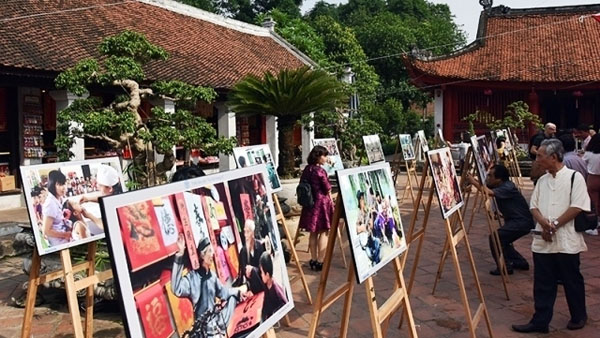


|
Visitors at the exhibition Eighty
photos at the exhibition were taken by nearly 40 photographers, who are
members of Hanoi Elderly Photographers Club and the Economic and Urban
Newspaper’s reporters and collaborators.
The
exhibition is divided into four main parts, featuring the themes of
landscape, culture, lifestyle and craft villages. It is seen as an
opportunity for the public to delve into Hanoi’s heritage with the
historical, cultural and architectural wealth of the thousand-year city,
where tradition and integration meet. The display also depicts colorful
aspects of Hanoians’ lifestyles and normal lives, from the suburbs to Hanoi’s
centre.
"Hanoi in
me” is an annual event organized by the Economic & Urban Newspaper in
collaboration with Hanoi Elderly Photographers Club. After 11 previous
events, "Hanoi in me” has become a meeting place for art and Hanoi lovers
every October.
The
exhibition will make an impression on the public with its sincere love for
Hanoi. As such, photographers, whether they are artists or reporters, have
captured the most beautiful moments of Hanoi.
The event
runs until October 13.
|
Source: NDO